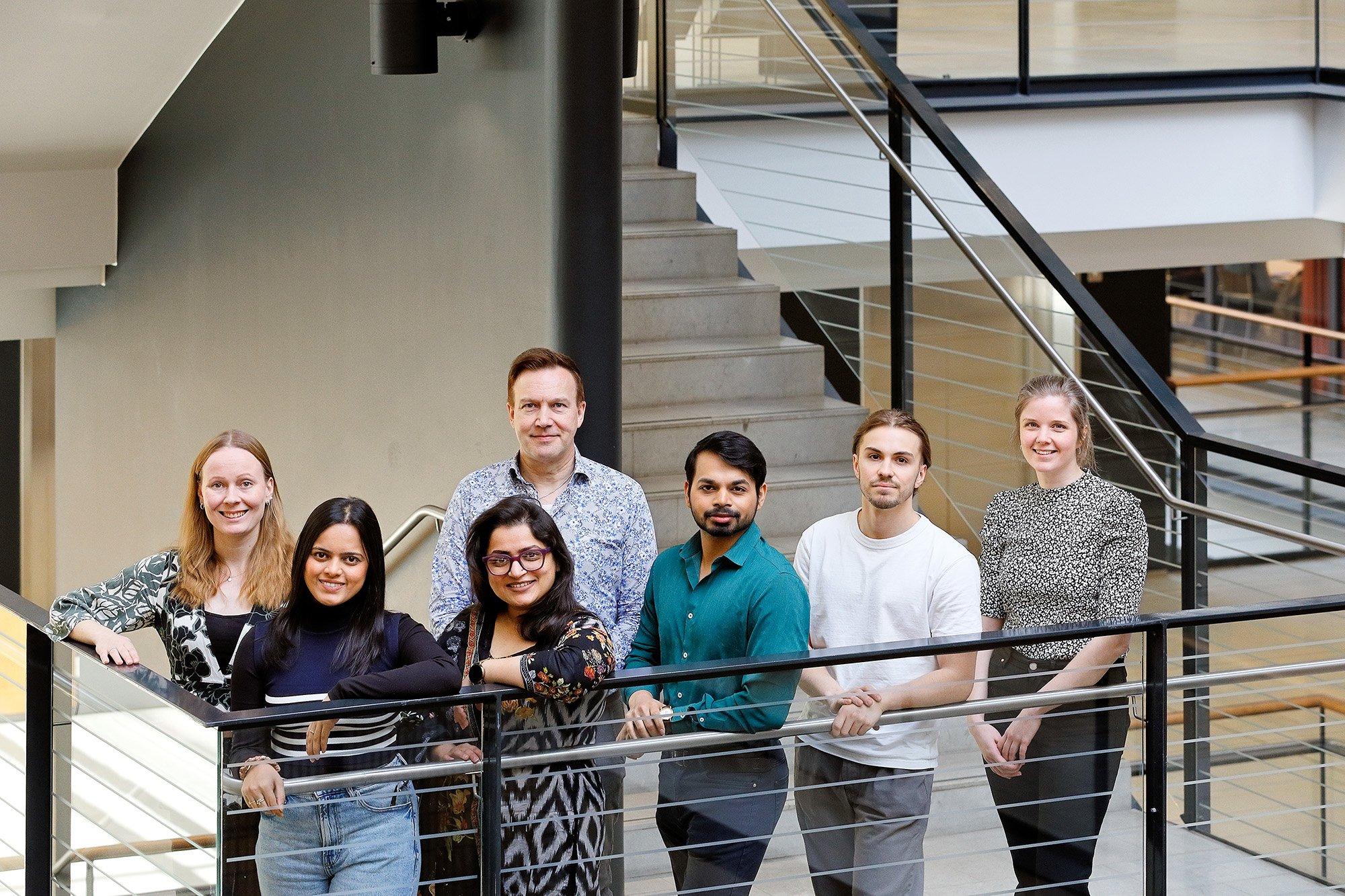
Experimental Studies of Neonatal Mitochondrial Diseases
Our research
Mutations in the mitochondrial assembly factor BCS1L are the most common cause of respiratory chain complex III deficiency, the most severe of them being GRACILE syndrome, a member of the Finnish disease heritage.
The patients show growth restriction already during the fetal period, liver disease, kidney disease and severe metabolic imbalance.
Our main experimental model is GRACILE syndrome patient mutation knock-in mice, originally generated by prof. Fellman’s group. These mice show growth failure and progressing liver disease from the third week of age, kidney tubulopathy and short life span. The disease-free postnatal period until 3 weeks of age gives an excellent time window to perform interventions at presymptomatic stage. We utilize the mouse model in studies of disease mechanism and in interventional studies, which include drug treatments and gene therapy. Promising beneficial effects are emerging from liver-targeted gene therapy. One of our most exciting recent findings is that the disease of these mice is highly similar to that of mice with premature aging syndromes, or progerias.

We have expertise in mouse phenotyping, histology, analysis of mitochondria respiratory chain structure and function (respirometry, blue native PAGE, complex III activity assay) metabolic assessments (CLAMs, metabolomics, nucleotide quantification methods), protein analyses (Western blot, immunohistochemistry, recombinant protein production), mRNA expression analyses (qPCR, transcriptomics) and standard molecular biology. Additionally, we use cultured cell models and fruit flies (Drosophila) for mechanistic studies.
Read more
Group Leader
Jukka Kallijärvi
Group Leader Emerita
Vineta Fellman
Postdoctoral Researcher
Christa Kietz
Doctoral Researchers
Rishi Banerjee
Nasrin Sultana
Divya Upadhyay
Undergraduate Student
Oliver Ros
Staff
Vilma Wanne
Quantification of UDP-GlcNAc using an enzymatic microplate method.
Upadhyay D, Banerjee R, Kallijärvi J, Purhonen J. STAR Protocols. 2024.
Quantification of all 12 canonical ribonucleotides by real-time fluorogenic in vitro transcription.
Purhonen J, Hofer A, Kallijärvi J. Nucleic Acids Research. 2024.
MYC – an emerging player in mitochondrial diseases.
Purhonen J, Klefström J, Kallijärvi J. Frontiers in Cell and Developmental Biology. 2023.
Enzymatic assay for UDP-GlcNAc and its application in the parallel assessment of substrate availability and protein O-GlcNAcylation.
Sunden M, Upadhyay D, Banerjee R, Sipari N, Fellman V, Kallijärvi J, Purhonen J. Cell Reports Methods. 2023.
Mitochondrial complex III deficiency drives c-MYC overexpression and illicit cell cycle entry leading to senescence and segmental progeria.
Purhonen J, Banerjee R, Wanne V, Sipari N, Mörgelin M, Fellman V, Kallijärvi J. Nature Communications. 2023.
The Finnish genetic heritage in 2022: from diagnosis to translational research.
Uusimaa J, Kettunen J, Varilo T, Järvelä I, Kallijärvi J, Kääriäinen H, Laine M, Lapatto R, Myllynen P, Niinikoski H, Rahikkala E, Suomalainen A, Tikkanen R, Tyynismaa H, Vieira P, Zarybnicky T, Sipilä P, Kuure S, Hinttala R. Disease Models & Mechanisms. 2022.
The mitochondrial coenzyme Q junction and complex III: biochemistry and pathophysiology.
Banerjee R, Purhonen J, Kallijärvi J. FEBS Journal. 2022.
A sensitive assay for dNTPs based on long synthetic oligonucleotides, EvaGreen dye, and inhibitor-resistant high-fidelity DNA polymerase.
Purhonen, J, Banerjee Rishi, McDonald A, Fellman V, Kallijärvi J. Nuclei Acids Research. 2020.
A spontaneous mitonuclear epistasis converging on Rieske Fe-S protein exacerbates complex III deficiency in mice.
Purhonen J, Grigorjev V, Ekiert R, Aho N, Rajendran J, Pietras R, Truvé K, Wikström M, Sharma V, Osyczka A, Fellman V, Kallijärvi J. Nature Communications. 2020.
Alternative oxidase-mediated respiration prevents lethal mitochondrial cardiomyopathy.
Rajendran J, Purhonen J, Tegelberg S, Smolander O-P, Mörgelin M, Rozman J, Gailus-Durner V, Fuchs H, Hrabe de Angelis M, Auvinen P, Mervaala E, Jacobs HT, Szibor M, Fellman V, Kallijärvi J. EMBO Molecular Medicine. 2019.
Prof. Ildiko Szabo, University of Padova, Italy
Dr. Luis Garcia Lopez, University of Granada, Spain
Dr. Nina Sipari, University of Helsinki, Viikki Metabolomics Unit
Dr. Matthias Mörgelin, Division of Infection Medicine, Clinical Sciences, LU
Dr./MD Pirjo Isohanni, Children’s Hospital, Helsinki, Finland
Dr./MD Risto Lapatto, Children’s Hospital, Helsinki, Finland
Prof. Artur Osyczka, Jagiellonian University, Krakow, Poland
Dr. Leah Biggs, University of Helsinki, Finland
Dr. Satu Kuure, University of Helsinki, Finland
Samfundet Folkhälsan
The Medical Society of Finland (Finska Läkaresällskapet)
Foundation for Pediatric Research in Finland
Medicinska Understödsföreningen Liv och Hälsa (“Life and Health Medical Fund”)
Magnus Ehrnrooth Foundation
Jane and Aatos Erkko Foundation
Stem Cells and Metabolism Research Program, University of Helsinki

